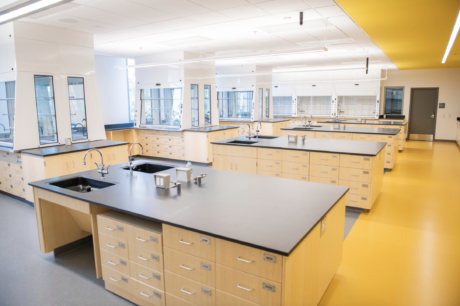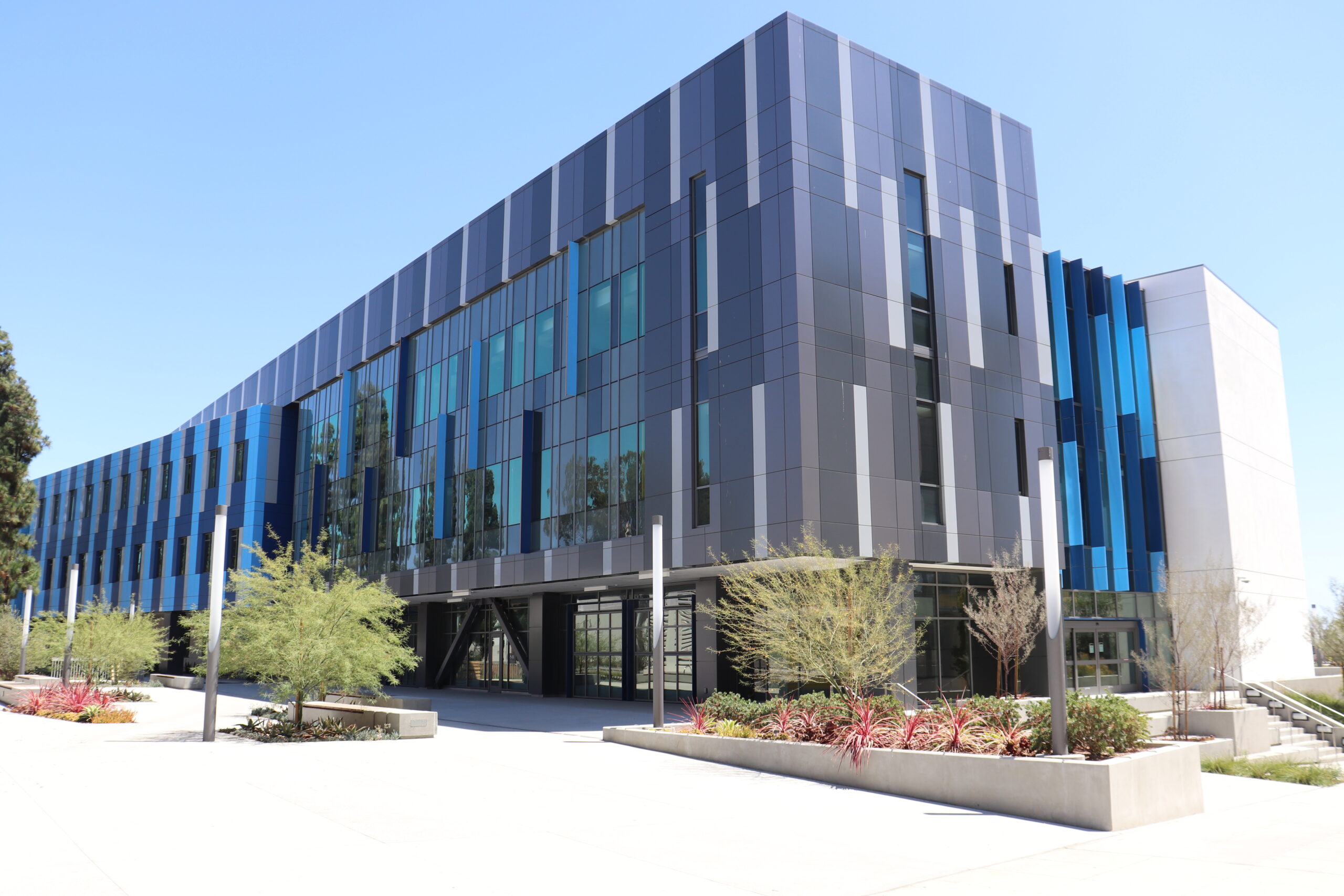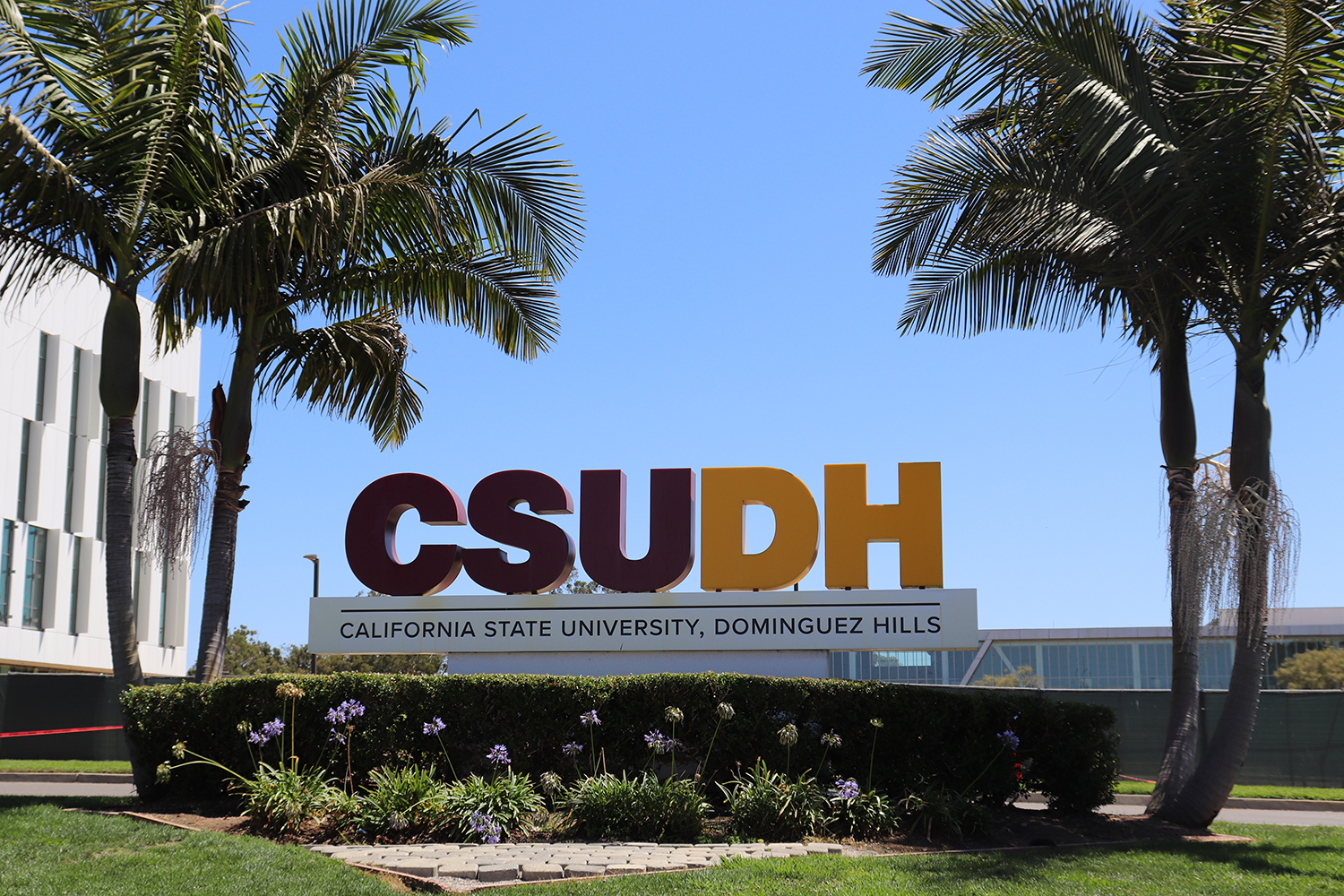The new science building’s grand opening plans have been derailed by the coronavirus. Photo by Iracema Navarro.
By Daniel Tom, Staff Reporter
In a perfect world, or at least one not turned upside down due to a global pandemic, the opening of the new Science and Innovation building on the California State University, Dominguez Hills campus this semester would have been one of pomp and circumstance.
The ceremonial ribbon-cutting in front of a gathering of distinguished alumni, former administrators and faculty. The local politicians. The shout-outs to the Toyota USA Foundation, which donated $4 million toward the high-tech Toyota Center for Innovation, and HGA, the Los Angeles architectural firm that designed the sleek, three-story building. Maybe a few TV crews and more than a few curious onlookers from the surrounding community.
But instead, the most expensive building ever constructed on this campus, the first to be built with state funds in more than 25 years, and the biggest, and most striking, manifestation of what CSUDH President Thomas A. Parham calls the university’s transition into a fully modernized 21st Century university, opens this semester with all the bang of a fizzled firecracker.
Eventually, the $82 million, 91,000-square-foot instructional and research center will house many of DH’s science lab classes, lectures, and STEM courses. But with 96% of classes conducted virtually this semester, only three sections of Biology 325: Clinical Microbiology Lab will use it, according to Dr Philip LaPolt, the dean of the College of Natural And Behavioral Sciences, said.

“This course is a crucial part of training future medical technicians and microbiologists, and the learning outcomes of the course involve hands-on experiences that can’t be replicated through remote instruction,” LaPolt said.
But though used sparingly, the safety of those students and faculty who will be in the building needs to be ensured as they teach and learn among uncharted waters.
“Strict attention is being paid to the health and safety of students, faculty and staff, in coordination with our Environmental Health and Occupational Safety office,” LaPolt said. “Each lab class has been split into two rooms to allow social distancing, which is maintained at all times… Personal protective equipment is worn including masks, gloves, and cleaned lab coats that are provided each lab session, and disinfection protocols are followed during and between classes.”
While use is strictly limited for now, the department continues to work on finishing touches with university and building officials such as ordering furniture and checking supply inventories so the building is ready to go when students do return to campus.
And what if that doesn’t happen until next fall? Well, that’s when the even bigger (by 15,000-square-feet) and more expensive (by $3 million) Innovation and Instruction Building opens. Imagine the celebration for that dual grand opening gala. Who knows, maybe even the pilots of the Goodyear Blimp might make the arduous trek from the 110 and 405 interchange.


